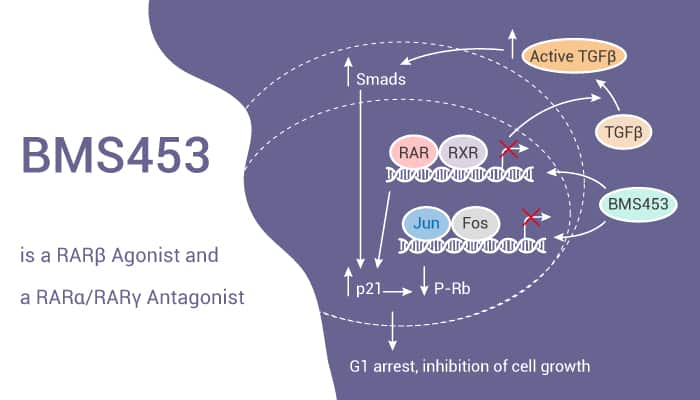Retinoids inhibit the growth of many human tumor cells. Retinoids are ligands of retinoic acid receptors alpha, beta, gamma (RARs, α, β and γ). Retinoic acid receptors (RARs) are ligand-controlled transcription factors that function as heterodimers with retinoid X receptors (RXRs) to regulate cell growth and survival. BMS453 is a RAR antagonist.

BMS453 is a RARβ agonist and a RARα/RARγ antagonist. Moreover, BMS453 inhibits breast cell growth predominantly through the induction of active TGFβ. BMS453 inhibits breast cell growth predominantly through the induction of active TGFβ, while atRA inhibits growth through other mechanisms. In addition, BMS453 inhibits the proliferation of normal breast cell growth without significantly inducing apoptosis. BMS453 causes a G1 block in the cell cycle with an increase in the proportion of cells in G0/G1 and a decrease in the proportion of cells in the S phase. BMS453 increases total p21 protein levels and CDK2-bound p21 protein but do not change CDK4-bound p21. Furthermore, BMS453 increases p21, decreases CDK2 kinase activity, which in turn leads to hypophosphorylation of Rb and G1 arrest. BMS453 inhibits normal breast cell proliferation by causing G1 arrest. Besides, BMS453 treatment induces the conversion of latent TGFβ to active TGFβ.
To summarise, Treatment with BMS453 causes increases expression of p21 protein, decreases CDK2 kinase activity, and Rb hypophosphorylation. The activation of TGFβ is necessary for BMS453-induced growth inhibition of normal breast cells. BMS453 has less toxicity than naturally occurring retinoids and may be a useful agent for breast cancer prevention.